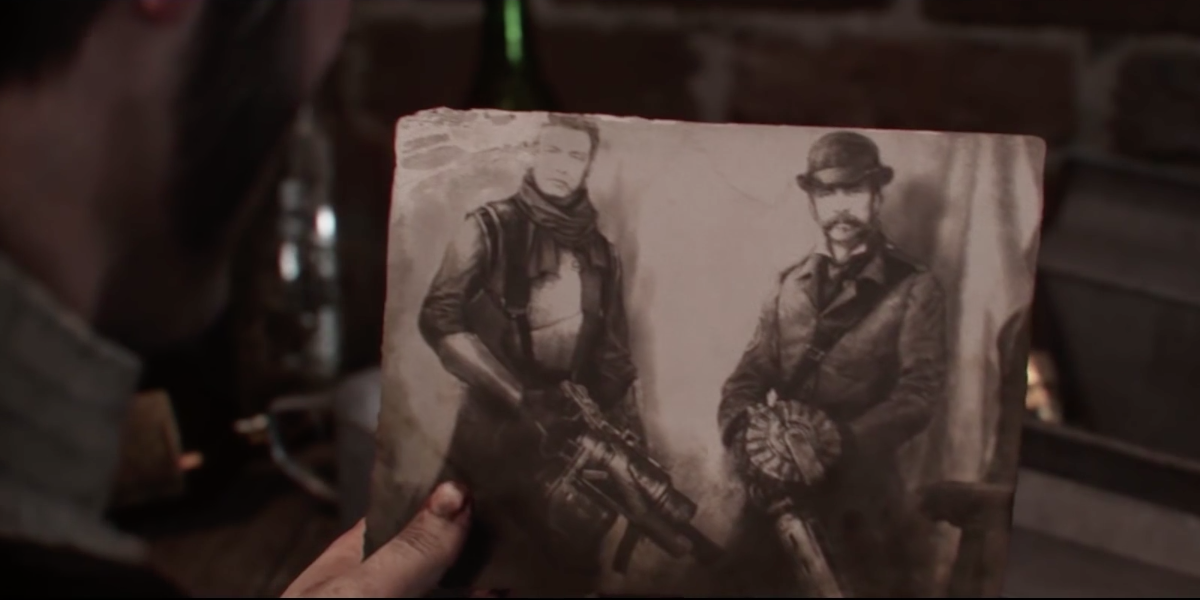The first photograph of a human being ever taken was that of an anonymous figure having his boots polished on Boulevard du Temple in Paris. Louis Daguerre—the French painter and chemist who invented daguerreotype process of photography—took this photograph in 1838 by exposing a chemically treated metal plate for about ten minutes. The photograph depicts a barren scene: a seemingly abandoned boulevard, deprived of people and traffic, with a single figure of a man standing in the bottom left corner of the image. This depiction of the boulevard, however, was not a faithful one. Early cameras were incapable of capturing moving objects. Due to the long exposure needed to capture the image, pedestrians and carriages traveling up and down the street left no trace on the photographic plate and were rendered invisible. Only a man standing still long enough to have his boots polished was able to register an image on the photographic plate, therefore, becoming the first human being ever to appear in a photograph.
Photography occupies a unique place in the chronology of art. When we use the term “modern” art we use it to refer to a time period that coincides with the beginning the industrial revolution—the mid 19th century. The importance of this period on art—let alone the entire world—cannot be overstated enough. For as much as we like to believe we exist in a “technological age” right now (a classification which is utterly absurd), the industrial revolution was a far more important epoch and quite literally ushered civilization out of antiquity and into the modern world. If you still question the validity of that claim or our contemporary idolization of that time look no further than games like, The Order: 1886, Dishonored 1 & 2, or Assassin’s Creed: Syndicate. Even films like Sherlock Holmes and The Prestige highlight this era for its inventiveness. Hell, the entire obsession of Steampunk comes from a glamorization of the 19th century.
The revolution enabled what is referred to as mechanized reproduction, the ability to mass produce standardized units of everything from iron beams to screws and nails. This is the reason that the 19th century sees the construction of buildings like the Eiffel Tower and Crystal Palace—buildings that are far larger than any that had come before in human history.
So what does all this have to do with photography? Well photography, unlike many other artistic mediums is relatively new and a byproduct of industrialization. It is mechanized reproduction in art, an idea that might not seem so crazy now but was one which was quite divisive in the mid 1800s. Similar to the way video games had to fight to be considered art, the idea of photography as an artistic medium was met with opposition. Where was the skill? Where was the technique? Where was the craft? What happens to authenticity when photographs can be reproduced at will? The machine did everything so how could someone operating a machine be considered an artist? While photography eventually enters into the discourse of the fine arts one could argue that it is already past its prime. I work at the SFMOMA as a Private Guide and by far the least requested tour I get is the photography tour. Interest is simply not really there. In 2016 everyone’s a photographer and the medium seems to reveal itself to the viewer far more easily than something like painting or sculpture which can operate in the realm of the abstract in a way photography can’t.
Perhaps the biggest misconception about photography, one that undoubtedly stifled its development as a medium, is its perceived innocence. “Innocence” as applied to art is the notion that what is being seen or represented is a genuine, unfiltered, and honest view of the subject matter. Because of the nature of photography as “capturing a moment in time” it is often presumed innocent. Now, if you only take one thing away from this article make it this:
THERE IS NO SUCH THING AS INNOCENT ART!
The very essence of art necessitates curation and authorship. A photographer choosing to take a photograph of something is a choice, it is a view through the mind and eye of the photographer. By choosing to show the viewer something, the photographer is also choosing what not to show the viewer. The photo is conveying a message of intent by the artist and is anything but innocent.
If you have any qualms over the deceptive nature of art, particularly in photography, look no further than the origin of the medium. For all the advancements in technology that the 19th century saw, it was also a period with a high mortality rate. Scarlet fever, typhoid, cholera and many other usual causes of sickness made death a part of everyday life. The 1800s chose to celebrate death in a rather unique way. What had been common practice of drawing or painting the deceased in order to commemorate them found a new medium in photography. Families would gather around the deceased relative and take a picture with them before burials, but not in the way you would imagine. The deceased would be propped up and dressed to look as though they were alive, eyes open and everything. In fact, postmortem photography was so ubiquitous that it really helped validate photography as an art form. Postmortem photographs are relatively easy to pick out. Remember, early cameras were unable to capture moving images and unless a person remained extremely still they would end up slightly blurry in 19th century photographs. Dead people, unburdened with movement, would actually appear looking clear and sharper than their living counterparts. Photography was never innocent, what appears to be a family photo, was actually the commemoration of a departed loved one.
I bet this is not where you thought an article about video games and photography was going to go huh? Of course, there are the obvious connections between the two, the most notable being the obsession with graphical fidelity in video games and their ability to produce photorealistic images. As the first mechanized art form, photography paved the way for film, television, and video games to be acknowledged and accepted as art. Given their history as artistic mediums and relative struggles to enter into the discourse of fine arts, a simple comparison of representational fidelity does them each a disservice.
Photography had a profound impact on traditional art forms. If you look at the discourse of painting in the mid to late 1800s you see a medium that begins to distance itself from realism. The 19th century sees the rise of the Impressionists, Post-Impressionists, Symbolists, and Fauvist. Classicism, Baroque, Neoclassicism, and Romanticism all sought to replicate realistic lifelike scenes that showed a mastery of form, skill, and technique.
Think about it. Imagine you are living in London in the 18th century, unless you’ve seen an elephant in person, you have no concept of what an elephant is or looks like outside of painting. When photography is introduced it allows for a proliferation of information in the form of the image. Painting no longer needs to occupy this role, it can move onto the aforementioned styles like Impressionism that come to define the 1800s.
Video games have come to occupy both sides of this spectrum. On the one hand, games like Uncharted 4 and The Order: 1886 (both games which include Photo Modes) are the peak of graphical fidelity in the console market. These games represent characters and worlds so realistically and with such skill that in many ways they act similarly to photography—or at least inspire a reaction in the same way as photography. When companies like Ready at Dawn, Naughty Dog, and Ubisoft work at perfecting photorealism, other companies can occupy their time developing new styles and aesthetics. You’re not going to replicate photorealism in painting (unless you’re Chuck Close), so why even bother? You’re better off working in an unique aesthetic style. Similarly, you’re not going to beat Naughty Dog when it comes to making a game look real, so why not develop your own unique graphical representation?
This is something we’ve begun to see more and more in gaming. While 8 and 16-bit video game aesthetics may be regarded as timeless, they are still byproducts of limitations, not replacements for realism. Contemporary games that eschew photorealism can often offer up striking and sublime visuals because they deliberately avoid trying to compete with Naughty Dog. thatgamecompany, Campo Santo, Giant Squid, and Playdead all make games that would never be mistaken for film but nevertheless embody gorgeous aesthetics. Just as Impressionism was a reaction to photography, so too are these games reactions to the growing trend of increased graphical fidelity. There would be no Monet, no Van Gogh, no Matisse without photography just as there would be no Firewatch, Journey, or Limbo without Uncharted, Assassin’s Creed, or The Order. There is a place for both photography and painting in art just as there is a place for realism and abstraction within video games.








